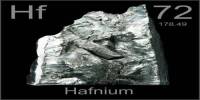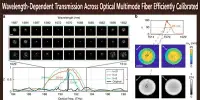A common method for examining surfaces at the micro and nanoscales is atomic force microscopy (AFM). The AFM probe is a cantilever with a sharp tip at its end, which is used to scan the surface of the material. The most common use for AFM is imaging; to ascertain the electrical, mechanical, and chemical properties of surfaces, there are a number of more specialized AFM approaches.
To adequately control the application of forces to surfaces for these techniques (especially mechanical property measurements), accurate stiffness calibrations of test cantilevers should be used. The cantilever of an AFM is typically made of a thin strip of material, such as silicon or silicon nitride, which has a spring constant that determines its stiffness.
The spring constant of the cantilever is a measure of its ability to deflect under a given force. There are many test cantilever stiffness calibration procedures available, based on dimensions, static force and displacement, and dynamic vibrational methods; however, these often have significant errors between ± 10% to ± 30%, as well as undetermined precision.
The majority of National Metrology Institutes (NMIs) have developed more exacting calibrated balancing procedures with SI traceability; nevertheless, because to their complexity, cost, and time-consuming operation, most AFM researchers are unable to use them.
The reference cantilevers represented by NIST SRM 3461 are an accurate and precise force calibration artifact for use in the field.
Atomic force microscope (AFM) test cantilevers are directly calibrated utilizing the reference cantilever method using SRM 3461, a silicon microfabricated device with seven cantilevers of varying carrying length and stiffness. This device is used to validate approaches for figuring out the stiffness of AFM cantilevers.
A unit of SRM 3461 consists of one silicon microfabricated device approximately 1.6 mm by 3.0 mm containing an array of seven (7) uniform, rectangular cantilevers of varying length and stiffness at the end. Each cantilever is nominally 50 μm wide and 1.45 μm thick with lengths of 300 μm to 600 μm in steps of 50 μm.
The device comes adhered to a polydimethylsiloxane (PDMS) gel film in a protective antistatic enclosure with a removable top. By momentarily removing the top, it can be used as is or carefully transferred to a suitable replacement holder. In a clean room setting, SRM 3461 was microfabricated, packed, and calibrated in order to reduce exposure to dust, debris, and impurities.
The packaging is designed to safeguard the device during transport and storage in lab settings other than cleanrooms. The device should be stored at room temperature (20 °C ± 5 °C) when not in use.
















